Oxygenating pond plants are plants that you grow in a pond with the aim to increase oxygenation. When used correctly, these submerged plants have a number of useful benefits, including reduced algae and possibly healthier fish.
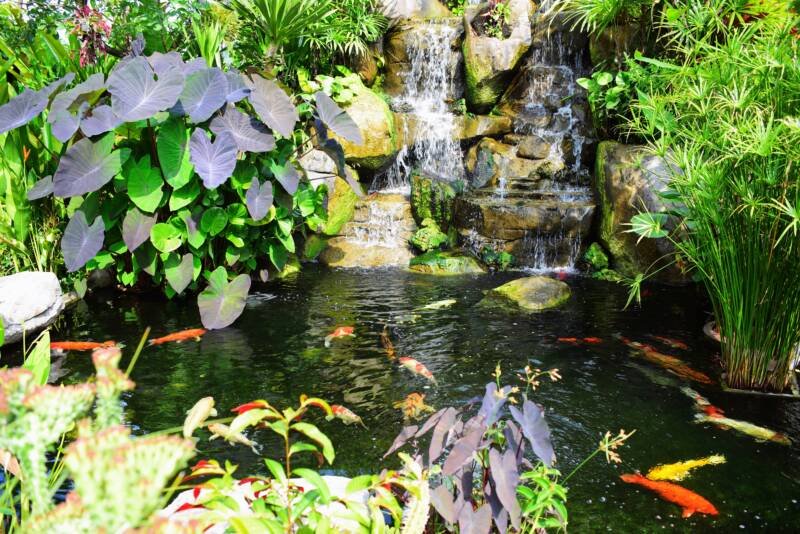
In order to get the most from these aquatic plants, it’s important to understand precisely what they can be used for, and how to choose the right ones for your pond. In this post, we’ll explain everything you need to know.
In this article
The Basics: What Are Oxygenating Pond Plants For?
Oxygenating plants are plants that you might grow with the aim of oxygenating your pond. These have the effect of keeping the pond clean and healthy, while also adding to the natural appeal of the pond.
Filtration
What these plants actually do, is to filter the pond water. This means that they can help to keep the water much cleaner and clearer, which makes it healthier for your fish too.
This happens because those tiny particles that might otherwise make your water appear less clear, are actually dinner for the right types of pond plants!
They will absorb their nutrients from the water via their leaves (instead of their routes like most other plants).
This is how they manage to reduce the number of algae in your pond: by competing with them for those nutrients. Because those pond plants absorb all the leftover organic matter, algae growth is naturally limited.
Place To Hide
On top of that, these plants which require zero anchorage – preferring instead to float near the surface – can provide shelter and shade for the fish underneath.
Many fish prefer having somewhere to hide, and this can be particularly true at certain times. Some fish use shade and cover during breeding for example, while others will want to get out of the bright sun during the day.
Koi, for example, particularly like to hide down underneath floating plants. The presence of plants can help encourage newts and frogs to take up residence in your pond.
Whenever you design an aquarium or a pond, you should always try to recreate the natural habitat of the fish that you intend to keep there.
When was the last time you found fish swimming in entirely clear water with no weeds or plants naturally? It just doesn’t happen!
Oxygen
Finally, they also produce oxygen like any other plant via photosynthesis, which results in better conditions for many different types of pond fish. Because fish get their oxygen from the water via their gills, this can further improve their health and happiness.
Visual Appeal
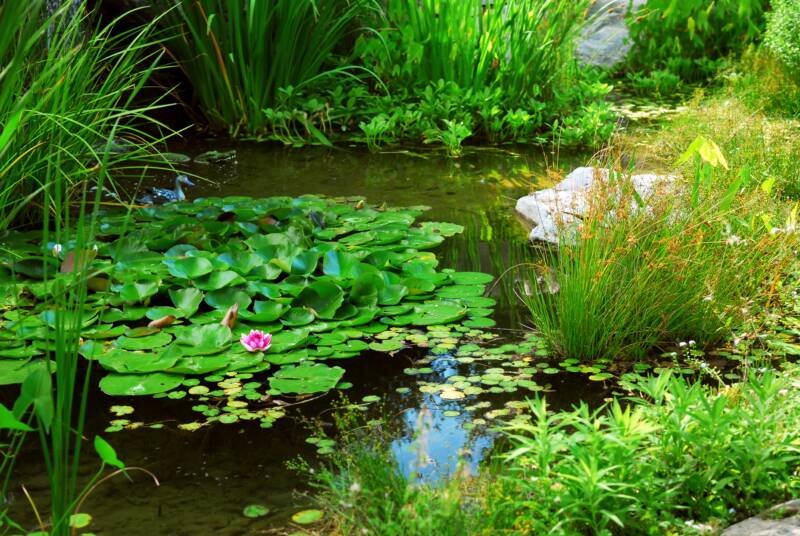
Oh and another thing! Ponds look good!
A lot of people install water features and ponds for their visual appeal in the first place, so why wouldn’t you want to maximize that benefit by choosing ponds that also have beautiful plant life growing from them?
The best floating plants can truly add to your pond and provide you with an additional gardening challenge, just like any of your flower beds!
You can even use pond plants in order to address issues with the look of your pond. For example, creeping water plants can be useful for covering exposed pond liner!
Types of Oxygenating Pond Plants
There are lots of oxygenators that you can choose from, and each will bring slightly different benefits for your fish, while also adding to the visual impact of your pond in a different way.
To help simplify matters, there are four main types of pond plants:
- Bog
- Marginal
- Floating
- Submersed
There are then a number of different types of plants that fall within each of these categories.
You can also categorize pond plants in another way: by considering whether they are hardy, or tropical.
Hardy plants are often perennial, meaning they will appear once every two years and are tough plants that are hard to kill.
Tropical plants are annual, and not quite so easy to look after, requiring for more specific temperatures and water conditions.
Bog Plants

Bog plants are the ones that work best with bog-like conditions. That means they will work best when placed along the edge of a pond where the soil is moist and there isn’t a lot of standing water. They are less suited to ponds with artificial barriers.
These are only partially submerged plants with their roots remaining under the water.
Examples of bog plants include:
- Rhubarb
- Pitcher plants
While bog plants look nice and can provide a great spot for frogs, they don’t do much to add to the oxygenation. Likewise, because the roots are the only parts submerged, they are not as effective at filtering water either.
Still, they are tough and they look good!
Marginal
Marginal plants are also known as emergent plants. This is because these are partially submerged plants, with part of the plant living beneath the surface. This is also where the name emergent plant comes from: they look as though they are emerging from the water!
Due to this, they are effective – at least to some degree – at oxygenating the water. Common options for marginal or emergent plants include:
- Cattails
- Rushes
- Lotuses
- Egyptian Papyrus
Lotuses are particularly attractive and a great addition to any pond!
Floating Plants
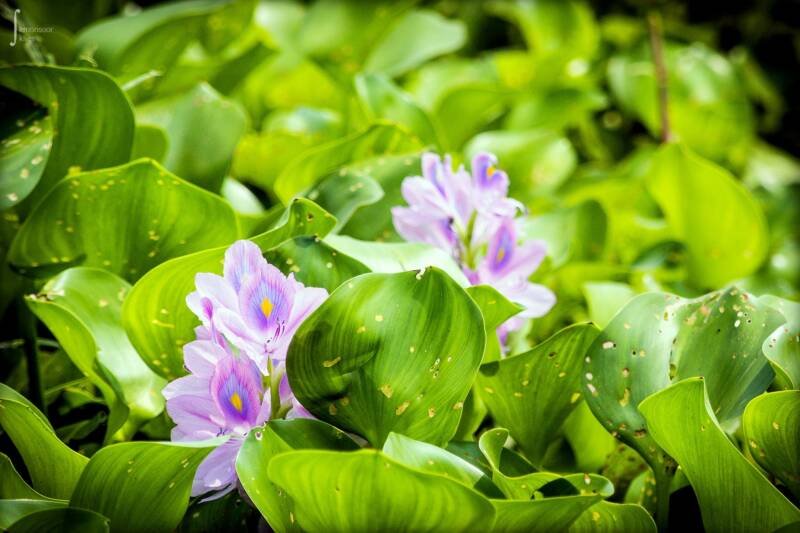
Floating plants do exactly what they say on the tin: they float on top of the water and don’t require any soil. Instead, they will happily travel around on top and soak up the sun’s light and any excess nutrients.
These plants are especially good at offering shade and creating a nice habitat for your koi and goldfish. They also happen to be especially good at soaking up those unwanted nutrients, which is what keeps the algae growth at bay. They look great too!
Some of the most common and popular options for floating plants include:
- Duckweed
- Water lettuce
- Water hyacinth
Submerged Plants
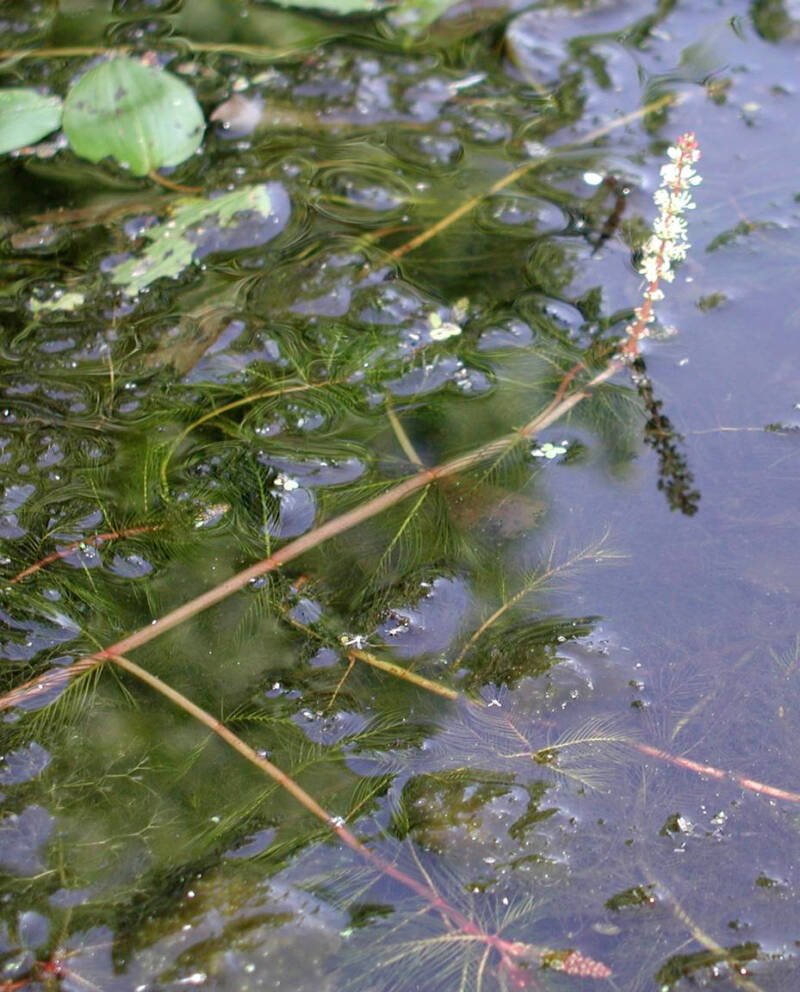
But if your main aim is oxygenating your pond, then submerged plants are your best choice. These submerged plants or submersed plants are by far the most effective at oxygenating the water. They are also the very best at helping to filter the water and deter growth.
Submerged plants are also known as macrophytes, and as the name would suggest, they are distinct for growing and thriving entirely beneath the surface of the water. This again offers a safe harbor for fish and gives them somewhere to hide.
That said, some submerged plants do leave some portions of themselves above the water. For example, they might show flowers or leaves. It’s because most of the plant is underwater though, that your pond gets to enjoy all those benefits.
Some of the most common examples include:
- Hornwort
- Spiked water-milfoil
- Anacharis
- Elodea
- Eelgrass
- Water-crowfoot
- Curled pondweed
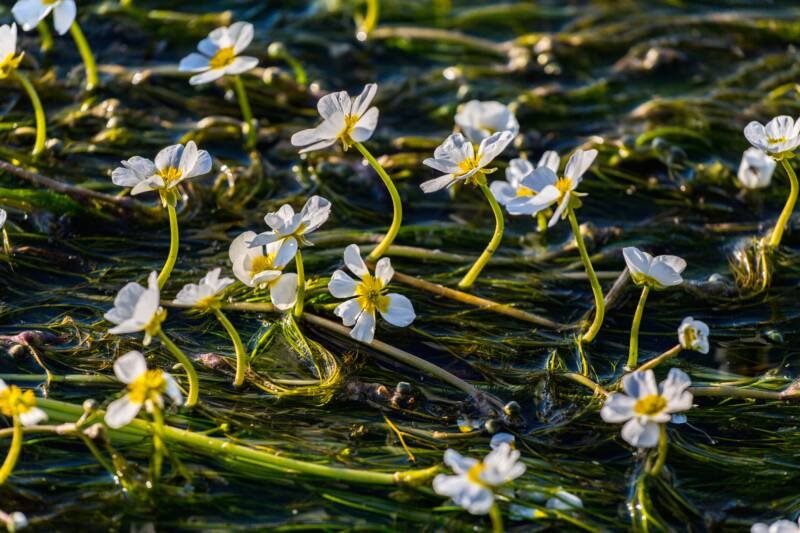
How to Care for Pond Plants
Now you know the benefits of pond plants and understand the difference between pond plants and emergent plants, it’s time to consider adding some to your own water feature.
How do you choose the right oxygenators for your own garden? And how do you keep them happy?
The first thing to consider is how many you need. Too many will create too much shade in your pond and too much competition for nutrition in the water. To that end, the general advice is to use three bunches per m2.
You can fertilize your oxygenators in order to provide them with proper nutrition. Local fertilization of oxygenating plants can be achieved using fertilization balls specifically designed for that purpose.
Planting
To plant your pond oxygenator plants, you should first do your research about the plants and where they tend to thrive best.
Some floating plants can simply be dropped into the deep water! The other will need planting. In this case, you may wish to push the cut ends of your plants into a solid flower pot, and then drop that into the water. Dress with 1-2cms washed pea gravel.
Make sure that the pot you use does not have drainage holes. You may wish to plant your pond plant with a slow-release fertilizer to aid growth, though this will depend on the specific species you use in your water garden.
Another option is to hold submerged plants down underwater using heavy rocks. As different plants require different water depth, and other factors, you should always consider the individual needs of each species before you begin planting.
Another tip is to let your pond become established for a while before you think about planting them.
The reason for this is that when a pond is completely new, it will have only a poor supply of CO2 and very little in the way of nutrition. It is actually the fish and other natural residents that will help to make the water suitable for your plants.
Another consideration is the time of year. Make sure to check this when buying your new pond plants!
Finally, be careful if you plan to use native plants taken from natural water sources. While this idea might be nice, those plants can bring with them a host of different parasites and other issues.
For that reason, you should quarantine them at least overnight using a solution of potassium permanganate before you introduce them to your pond.
Maintaining a water garden is a truly rewarding experience, just like maintaining an aquarium tank, or a regular garden. This means creating a natural microcosmic ecosystem that will ultimately become self-sustaining.
When everything begins to click into place, it is immensely satisfying watching the careful balance of nature play out as your plants and fish begin to thrive!
Our Choices for the Best Oxygenators
Let’s finish by taking a look at the very best oxygenating pond plants for your water surface and down below.
First, the Spiked water-milfoil (Myriophyllum spicatum). This plant is native to Britain and has a submerged “feathery” foliage. You’ll also find small yellow and red flowers growing above the water surface.
This plant is beautiful to look at, and it’s one of the very most efficient there is for oxygenating your pond and helping your fish to thrive. It’s also hardy and works well in any sized pond. It’s easily mistaken for other milfoils.
Water-crowfoot (Ranunculus aquatilis) is another beautiful plant for your water surface. This one produces white and yellow flowers that look like daisies. It is not only one of the best plants for helping oxygenate your pond, but also takes care of the rest of your garden by attracting bees, hoverflies, wasps, and butterflies – natural predators for many pests that can otherwise cause trouble.
Curled pondweed (Potamogeton crispus) is a common choice for a submerged pond plant. This oxygenator has an olive and green appearance similar to seaweed. It also offers pink flowers above the surface. It works well in any weather, spreads easily, and creates lots of nice hiding places for fish.
Any of these plants will do wonders for your pond, but there are countless options for oxygenating pond plants – so take your time and choose the perfect combination for your goals!